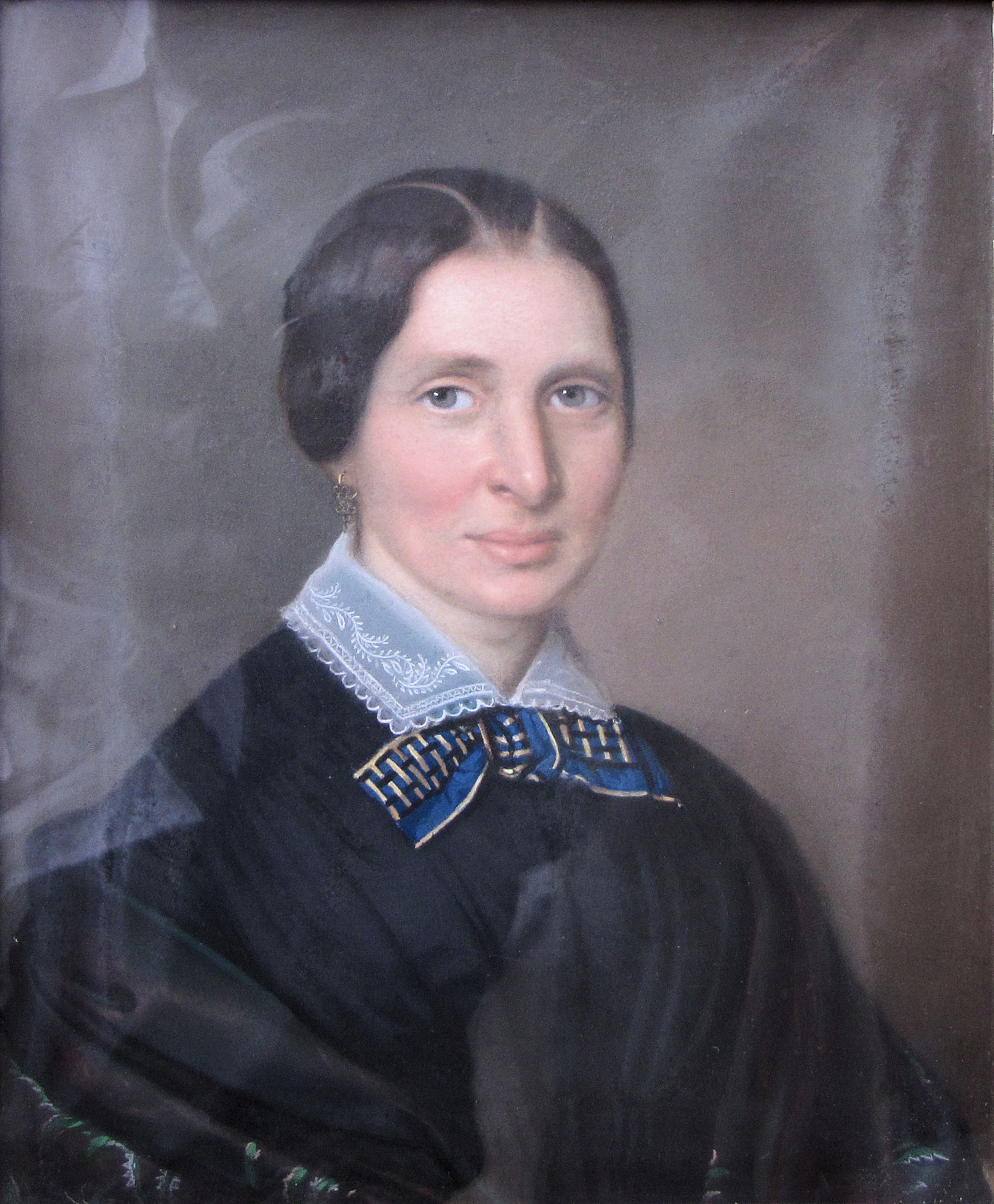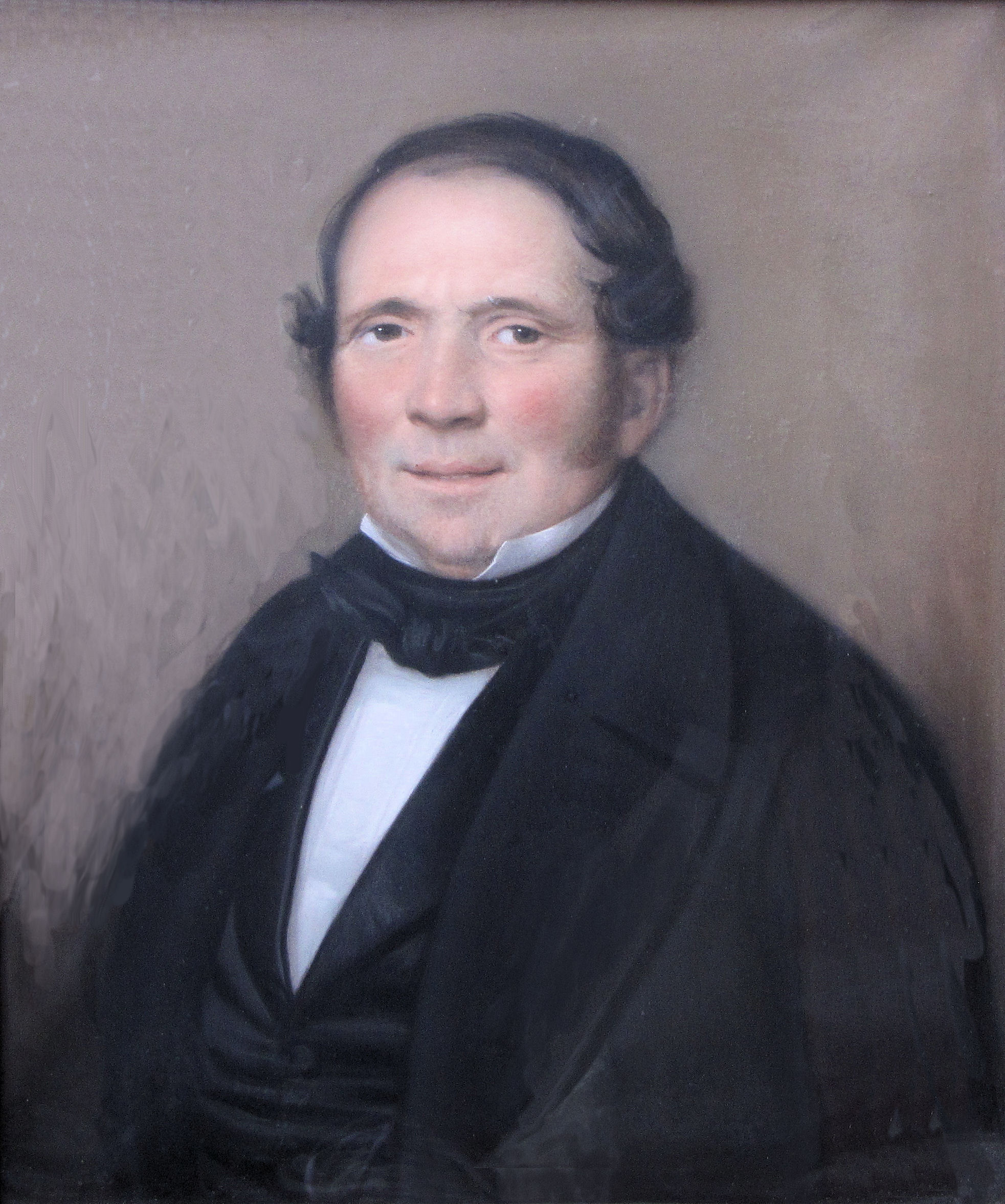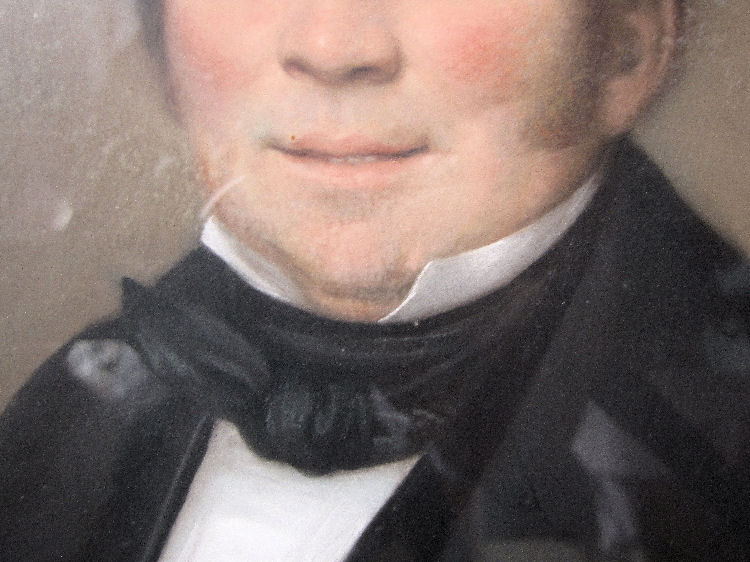by Wolfgang Hock
Painting on photographs
The colored photography wasn’t invented yet, so to get out of the problem, artists painted on black-and-white photos; a widely spread technique of the nineteenth century feeding a lot of painters.
Here you can see two typical examples from that time. Portrayed are my own great-great-grandparents: Johann Adam Hock and his wife, née Geiger, “painted” by a painter named Rügel (?) from Aschaffenburg at 1851.
On the back side is written explicitly “painted by …”, but looking more exactly, you can see the over painted black-and-white photography clearly, over painted by a mixture of chalk, pastel and watercolor, what was tried to hide obviously.
This way, painters got the accurateness of photography and the colors of paintings together. From there comes the relatively small picture size of 25 x 29 cm, a typical size of photography at that time.
But it was important not to recognize those pictures as colored – over painted – photographs because this would diminish the “value” of the pictures. Value as art (painting = art; photography is art ?) as well as materially. A ‘hand-made’ painting was well paid, better than a “hermaphrodite photography” after all.
The use of photography and the small size were faked still more by the expensive and thick picture frame, mostly painted in gold, typical for paintings.
To give the whole a classy and at the same time pleasing impression, painters kept the style of idealized neo-classical portrait painting of the Ingres tradition, the official art in France. On the other side you can see the typical nineteenth century portrait photography in black-and-white.
The question of quality doesn’t arise due to the technique - painting over photos, but due to the lack of originality and accordingly the simple imitation of preformed painting traditions. The use of the technique of painting over photos is not a criterion of quality, art or no art, great skills or no skills etc.


“Painted” by Rügel (?), Aschaffenburg
Portrait of the Hock couple in 1851
Colored over painted black-and-white photographs
by a mixture of chalk, pastel and watercolor
25 x 29 cm
Private property, Bamberg

Detail

Detail
ALL IMAGES AND SITE CONTENT © WOLFGANG HOCK